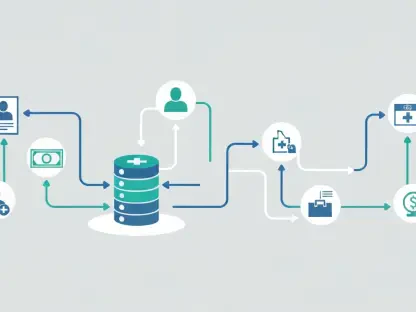In the rapidly evolving landscape of artificial intelligence (AI), the recent launch of xAI’s new API service has generated significant buzz. Founded by tech magnate Elon Musk, xAI has entered the public beta phase, providing developers with access to its Grok models. As this new entrant positions itself against major players like OpenAI and Anthropic, the AI community is closely watching.
Introduction of xAI’s API Service
The Launch and Public Beta
Elon Musk’s AI venture, xAI, has introduced an API service aimed at developers. This move enables them to integrate xAI’s robust large language models (LLMs) into their own applications. The public beta phase has generated excitement across the tech community, with developers eager to explore the potential of these new tools. Announced on Twitter, which has been rebranded as X, the service seeks to attract developers by offering state-of-the-art models designed to streamline and enhance application development.
The public beta phase serves as an open invitation for developers to trial the API, providing feedback and gaining hands-on experience with the Grok models. Initial reactions from the community indicate a high level of interest, driving conversations about how xAI’s offerings compare to existing platforms. By opening its doors to a wider audience during the beta phase, xAI aims to rapidly refine its service based on real-world usage, thus positioning itself as a credible competitor in the crowded AI marketplace.
The Grok Models
The centerpiece of xAI’s offering is its Grok models. The Grok-1 model initially attracted attention by outperforming OpenAI’s GPT-3.5. With the launch of Grok-2 and the more cost-effective Grok-2 mini, xAI is set to provide strong competition to existing AI giants. The Grok-1’s initial performance metrics demonstrated that xAI has the potential to meet specialized needs where other models may fall short, making it a promising tool for various applications requiring complex problem-solving capabilities.
Grok-2 aims to build on this foundation by offering improved performance metrics and more flexible deployment options, tailored to the needs of a diverse developer community. Meanwhile, Grok-2 mini provides a more accessible entry point for developers seeking cost-effective yet powerful AI solutions. These models focus on versatility, capable of handling text, code, and image generation and understanding, which underscores their potential to be integrated into a wide range of applications, from chatbots to advanced data analysis tools.
Competitive Landscape
Price Comparison
One of the most discussed aspects of xAI’s new API is its pricing. While the xAI service is pricier than OpenAI’s, especially for the Grok-beta model, it offers different value propositions. Detailed comparison tables show that while newer models from OpenAI are also expensive, xAI’s offerings might still present a better deal under certain circumstances. For instance, the cost per token for Grok models may be higher, but the added functionalities and performance improvements might justify the expense for specific use cases.
Pricing plays a crucial role in the decision-making process for developers and organizations considering integrating new AI models into their workflows. By positioning its models at a premium, xAI implicitly argues that the advanced capabilities and unique features of its models offer sufficient added value to offset the higher costs. This premium pricing strategy will likely spark ongoing debates and comparisons within the tech community as users evaluate the cost-benefit ratio of adopting xAI’s services over more established alternatives.
Performance Metrics
Performance is a critical factor when comparing AI models. The Grok-1 model exceeded GPT-3.5 but didn’t quite match GPT-4. This sparked xAI’s ambition to bridge this gap with enhanced models like Grok-2. Developers are keenly awaiting empirical data to see if xAI’s models deliver on their promise. Initial tests and benchmarks will be critical in assessing whether Grok-2 can challenge the capabilities of GPT-4 across various applications and use cases.
The performance of an AI model is often measured through a combination of speed, accuracy, and the complexity of tasks it can handle. xAI’s focus on refining its models suggests a deep commitment to providing robust, high-performing tools that can stand up to the rigorous demands of modern applications. As developers begin to put Grok-2 and Grok-2 mini through their paces, the broader AI community will be closely watching the outcomes to gauge how these models stack up against existing leaders in the field.
Strategic Positioning
Direct Competition with OpenAI and Anthropic
xAI was founded with the intent to challenge the dominant AI players, primarily OpenAI. By providing an API service, xAI aligns with industry trends, mirroring established practices of integrating LLMs into various applications seamlessly. The strategic goal is clear: to not just compete, but to potentially surpass these AI behemoths. xAI’s entry into the market is a direct challenge to the entrenched positions of these companies, signaling a willingness to disrupt the status quo.
xAI’s competitive strategy seems to be multifaceted, focusing not only on the performance and versatility of its models but also on creating an ecosystem that encourages developer engagement and innovation. By offering similar conveniences and integration capabilities as OpenAI and Anthropic, xAI aims to lower the barrier to entry for developers familiar with these platforms. This strategic positioning underscores xAI’s ambition to be regarded as not just an alternative, but potentially a preferred option for developers seeking cutting-edge AI solutions.
Developer Engagement
Developer engagement is pivotal for the success of any API service. The xAI Console provides an array of tools, from API key creation to usage tracking, designed to foster a rich development environment. This robust toolkit aims to simplify the integration process and inspire creative applications of the Grok models. The ease of use and comprehensive documentation provided by the Console could be crucial factors in attracting and retaining a developer base.
Features like team member invitations and billing setups add an additional layer of utility, making it easier for larger organizations to manage multiple projects and collaborators. By addressing various practical needs that developers encounter in their workflow, xAI is positioning itself as a developer-friendly platform that understands and caters to the nuanced requirements of its users. This focus on engagement and usability indicates that xAI is not merely launching an API service but building a community around its technologies.
Functionalities and Tools
Key Features of the xAI Console
The xAI Console is the nerve center for developers using the new API service. It offers functionalities such as billing setups, team member invitations, and comprehensive usage tracking. These tools are designed to support developers in embedding and managing xAI’s models effectively. The Console aims to provide a cohesive and intuitive experience, allowing developers to focus on innovation rather than administrative overhead.
Billing setups, for instance, are streamlined to accommodate various payment structures, making it easier for both individual developers and large teams to manage their usage and costs. The ability to invite team members and manage permissions within the Console further enhances its utility, particularly for collaborative projects that require coordinated efforts. Comprehensive usage tracking allows organizations to monitor performance and optimize their AI deployments, ensuring that they get the best return on their investment.
Models’ Capabilities
The Grok models available through the xAI API are designed for versatile applications. Capable of generating and understanding text, code, and images, these models are poised to cater to a broad spectrum of needs. The ongoing development hints at the introduction of even more advanced models, including the teased ‘grok-beta.’ These capabilities suggest that xAI’s offerings are not only robust but also adaptable, capable of meeting the evolving demands of various industries.
For developers working on complex projects, the flexible and comprehensive capabilities of the Grok models could be a game-changer. The ability to generate and understand multiple types of content means that these models can be integrated into a wide range of applications, from customer service chatbots to sophisticated data analysis tools. This versatility enhances the practical value of xAI’s API service, making it a compelling option for developers seeking to leverage advanced AI functionalities across various domains.
Integration and Accessibility
Seamless Integration Options
xAI’s API supports integration with widely-used platforms like OpenAI and Anthropic. Developers can leverage SDKs in popular programming languages such as JavaScript and Python. Whether through REST, gRPC, or xAI’s own Python SDK, the service offers flexibility and ease of use. This emphasis on seamless integration is crucial for attracting developers who may already be invested in other platforms but are open to exploring new and potentially superior options.
The flexibility in integration options also means that developers can choose the method that best suits their existing workflows, minimizing disruption and reducing the learning curve associated with adopting a new API service. By offering compatibility with established platforms and tools, xAI is making a strategic play to capture a broader segment of the developer market, ensuring that its services can be easily adopted and integrated into existing projects.
Back-End Infrastructure
The xAI API service infrastructure is built using Rust, designed to support robust deployment across multiple regions. Currently limited to the us-east region, xAI’s infrastructure reflects its readiness to expand and scale, ensuring consistent performance and availability. This focus on scalability and performance is a testament to xAI’s commitment to providing reliable and high-performing services that can meet the demands of a growing user base.
Rust, known for its modern language features and performance capabilities, is an indicator of xAI’s forward-thinking approach to technology infrastructure. By choosing a language and framework designed for scalability and efficiency, xAI is preparing itself to handle the increased load and complexity that comes with broader adoption. As the service expands to additional regions, this robust infrastructure will be crucial for maintaining high standards of performance and reliability, ensuring that users across the globe can benefit from xAI’s offerings.
Infrastructure and Future Prospects
Ensuring Scalability and Performance
Scalability and performance are non-negotiable aspects for a new entrant in the AI API market. xAI’s infrastructure decisions showcase a commitment to delivering stable and scalable services. The use of modern languages and frameworks suggests a future-proof approach to technology. These decisions are not just about meeting current demands but also about anticipating future needs as the AI landscape continues to evolve.
Ensuring scalability involves planning for increased usage and the ability to expand resources seamlessly. xAI’s choice of infrastructure reflects an understanding that its success will depend on the capacity to grow without compromising on performance. By laying a strong technical foundation, xAI is positioning itself to handle the demands of a rapidly expanding user base, providing confidence to developers and organizations that their investment in this new platform will be supported by a robust and scalable backend.
Continuous Development and Enhancement
The launch of the new API service is just the beginning for xAI. The commitment to continuous improvement and the introduction of new models indicate a long-term strategy. Developers and industry watchers alike are interested in seeing how xAI will evolve and challenge existing norms in the AI landscape. This forward-looking approach suggests that xAI is not content with merely participating in the current market but is aiming to shape its future.
The promise of ongoing enhancements and the development of new models like the teased ‘grok-beta’ indicate that xAI is dedicated to staying ahead of the curve. This continuous development is likely to result in regular updates and new features that keep the platform competitive and appealing to developers. By committing to a cycle of innovation and improvement, xAI is signaling to the market that it intends to be a long-term player in the AI space, one that is capable of adapting to and driving future trends.
Conclusion
The arrival of xAI’s API service for Grok models marked a significant development in the competitive AI sector. With a clear intent to challenge giants like OpenAI and Anthropic, xAI banked on its innovative models, strategic pricing, and robust developer tools. As the public beta progressed, the world watched closely to see if xAI could truly disrupt the status quo and carve out its own space in the AI market.
Consolidated Information
The article thoroughly discussed xAI’s new API service, its competitive landscape, comparative pricing, and the functionality of the models and tools offered. Through an objective lens, the article captured the essence of xAI’s strategic aims, technological offerings, and the broader industry context within which it operates. It emphasized the significance of infrastructure, accessibility, and developer engagement as crucial factors in the service’s success.
Final Review and Edit
In the swiftly changing world of artificial intelligence (AI), xAI’s recent introduction of a new API service has stirred considerable attention. This excitement is due largely to the company’s founder, the influential tech figure Elon Musk, who has successfully led numerous visionary projects. xAI has now entered the public beta phase, offering developers the chance to work with its advanced Grok models. These models promise to push the boundaries of what AI systems can achieve.
Competition in the AI field is fierce, with established giants like OpenAI and Anthropic already dominating significant market shares. Despite this, xAI is determined to carve out its own space and bring fresh innovations to the table. The AI community is eagerly watching these developments, anticipating how xAI’s technology will stack up against its more seasoned competitors. This new initiative by xAI exemplifies the dynamic and rapidly evolving nature of AI technology, as companies vie for leadership in shaping the future of intelligent systems.









